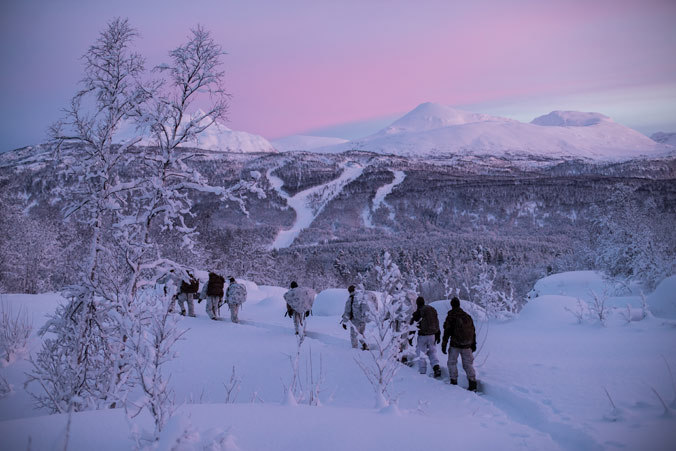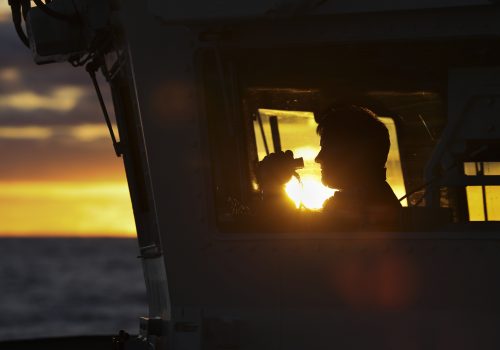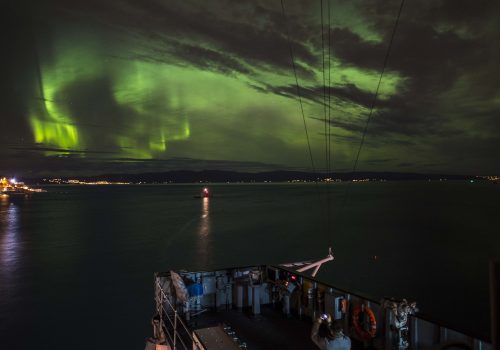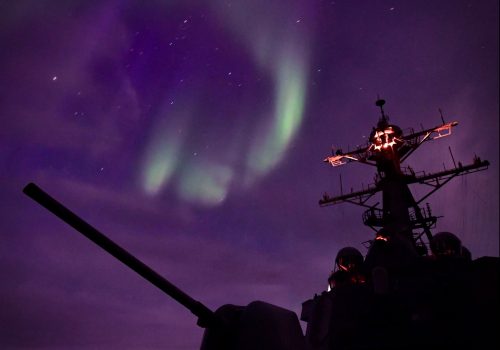All security is local: Arctic defense policies and domain awareness

Abstract
This report assesses the defense policies of Canada, Denmark, Finland, Norway, and Sweden as they apply to the Arctic. Russia’s annexation of Crimea, its militarization of the Kola Peninsula, and its opposition to the liberal international order forced Arctic states to revisit their defense policies. Some focused attention on the Baltic Sea. Others focused on territorial defense. Still others focused on the Arctic. By 2021, however, each state had a relatively well-defined defense policy for the Arctic. This report details each policy’s content, trends over time within each country, and areas of convergence or divergence across countries. The report then places the concept of domain awareness within the context of Arctic defense strategies. The report concludes with recommendations on acquiring and using manned and unmanned systems, data links, distributed basing, and military exercises to ensure a secure and stable Arctic.

The military-security threat environment
Today’s Arctic defense policies are to some extent encumbered by the period between roughly 1990 through the Russian annexation of Crimea in March 2014. Before that annexation, the belief across Europe and in much of the developed world was that armed conflict in Europe was something that belonged to a bygone era.
That all changed in early 2014 with events in Ukraine. At the same time, Russia was quickly developing capabilities that could threaten Arctic states. Russia deployed advanced military capabilities across its Arctic territory, capabilities that support an anti-access, area-denial approach to defending their strategic assets. Russia refurbished or built new military bases and capabilities along its northern and western borders. The Russian military deployed advanced air defenses, interceptor aircraft, anti-ship missiles, and offensive tactical weapons. Some of these capabilities could help with search and rescue efforts along the Northern Sea Route and serve the defensive purpose of protecting Russian strategic nuclear forces from US conventional attack. Yet Russian capabilities also created significant problems for the United States and NATO in defending the Baltic states from Russian coercion and potential invasion. For example, Russian air defenses located in Severmorosk, St. Petersburg, and Kaliningrad covered the airspace across Finland and the Baltic states, northern Sweden and Norway, southern Sweden, most of Poland, and parts of Germany. The deployment of Iskander-M, a nuclear-capable missile with a range of at least 700 kilometers, to Kaliningrad put the Baltic states, Poland, eastern Germany, and southern Finland and Sweden at risk. In short, Russian capabilities in the Arctic could be useful for operations in both the Arctic and against neighboring states.
With the ongoing Russian invasion in Ukraine, the potential for leveraging these capabilities has become all too real.
Points of congruence and points of friction between Arctic allies and partners
There is widespread, though not universal, agreement that Russia poses a military security threat to the Nordic states, especially among each country’s military establishment. That threat may not manifest in direct, purposeful attack on any Arctic state or its Arctic assets. Instead, the consensus seems to be that a conflict with Russia could spill over into the Arctic from a Baltic Sea crisis, an accident or incident in the Barents or Norwegian Seas, or an escalatory move arising from a conflict somewhere else such as renewed fighting in Ukraine. There is agreement that any such conflict might only affect parts of the Arctic (i.e., portions of the transit route known as the GIUK Gap, or the Norwegian Sea, or the Kola Peninsula) rather than the whole of Arctic territory and maritime area. Finally, and perhaps most importantly, no country in this study believes it can deter or survive a military confrontation by acting alone.
The priority each nation places on Baltic Sea security versus Arctic security varies. The late Tip O’Neill, speaker of the US House of Representatives from 1977 to 1987, was famous for saying, “All politics is local.” With regard to Arctic defense policy, perhaps all security is local. The Finns, Swedes, and Danes have prioritized Baltic Sea security because that is where their interests are most at stake. Norway has prioritized Arctic security, particularly in its maritime and air domains, because the nation relies so heavily on those domains not only for commerce but for economic and political viability as well.
These countries also differ in their approach to international institutions. Sweden and particularly Finland have prioritized an EU role in the Arctic on the political, economic, and even military fronts. Other countries, like Norway and Denmark, prioritized the role of NATO in their defense policies, which makes sense given their local circumstances. Canada supports a strong NATO role in the European High North but objects to a NATO role in the North American Arctic. Canada instead prioritizes the role of NORAD as the more appropriate entity to handle defense of the North American continent. Negotiations over Arctic defense policy get complicated when countries advocate for a principal role for their favored institution and others disagree.
Finally, there is the question of intelligence sharing. All countries in this study have publicly committed to greater intelligence sharing. That said, Sweden and Finland’s nonaligned status puts a limit on how much sensitive information NATO members can share with them. The United States, for example, releases information to foreign partners differently depending on their status as an ally, partner, or member of the Five Eyes group. The broader point is that differing intelligence pictures can lead to different policy prioritization, which can impede defense coordination.

Implications for domain awareness
The transatlantic community should be concerned about several troubling scenarios that could escalate into armed conflict in the Arctic. The first and most obvious scenario is of a Russia-NATO conflict in the Baltic Sea or Black Sea regions spilling into the Arctic. Russian military aggression against the Baltic states or against NATO forces near Ukraine would involve or could potentially involve elements of the Russian Northern Fleet, based in Severomorsk, which would immediately expand the conflict into the Arctic. Even if Russian naval assets did not immediately attack, NATO forces would have to act as if Northern Fleet elements were potentially hostile forces, meaning that NATO might launch precautionary attacks against them following a Russian incursion. In either instance, there would be significant risk of horizontal escalation into the Arctic. Having a detailed picture of Russian actions and movements would be crucial in this scenario.
A second scenario involves a misunderstanding or accident during military exercises or training. Russian forces are famous for launching mock attacks against Western military assets and for operating without activating their location transponders. They have launched mock attacks against the Vardo radar facility in Norway, Gotland Island in Sweden, Bornholm Island in Denmark, and against NATO ships and aircraft in other locales. Any one of these incidents could have escalated out of control had Western forces reacted differently or had Russian forces attacked without orders. Having better domain awareness would give Western forces better warning of Russian military movements and insight as to whether specific incidents were part of a larger military campaign.
A third scenario involves a dispute over mineral extraction or commercial fishing in Arctic waters escalating out of control. Russia and Norway disagree on whether Norway has sole jurisdiction over the waters and seabed around the Svalbard archipelago. Conflict could arise should Russia back up its claims with force. Or consider that nine countries plus the EU have agreed to a fishing moratorium for the central Arctic ocean. Conflict could erupt should a large state-authorized fishing operation be caught harvesting in those waters. Appropriate domain awareness could give Western Arctic states warning of initial violations and potentially escalatory behavior in either maritime crisis.
Each scenario points to the need for robust air and maritime domain awareness in the Arctic. The most likely attack vectors are via air or sea. Scenarios involving overland aggression are much less plausible (though still of concern to the Finnish and Norwegian armies). That begs the question of the degree to which Arctic states possess the domain awareness capabilities needed to anticipate each scenario.

Recommendations
Increase unmanned and remotely manned systems.
Manned systems are inherently risky in an Arctic environment, particularly when vast areas need to be monitored under very cold conditions. Unmanned terrestrial systems and more robust satellite constellations in polar orbit might be good substitutes for manned missions. Unmanned aircraft and maritime systems and better satellite surveillance make sense in the high Arctic Ocean, the North Atlantic, and around Greenland, where the long loiter time and less sophisticated basing requirements for these systems are advantages compared to the requirements for manned systems, and where it is more likely to see adversarial military activity.
Employ manned systems where necessary, in coordination with allies and partners.
There are times and places, however, when a manned vessel, boots on the ground, or a pilot in the cockpit are needed. A frigate demonstrates national or alliance presence in a way that an unmanned maritime vehicle does not. Part of this is symbolic and aimed at allies and partners. Sending a manned vessel or deploying soldiers or conducting joint air operations signals that a nation cares enough to put its people in harm’s way. That can be reassuring to allies. Part of this is a deterrence signal to potential adversaries. Deploying manned assets raises the potential costs of backing down in a way that cannot be matched by unmanned systems, and those higher costs increase the credibility of one’s commitment.
Ensure adequate data links to support manned systems.
If manned systems are to operate efficiently and safely, they need to be able to navigate accurately and communicate over long distances. Until unmanned systems are fully autonomous, they too will need to do the same. There is little point in fielding these systems if they cannot talk to one another or with their national or alliance headquarters. Integration of all these systems will require data links that can transmit large volumes of information at speed.
Consider distributed basing.
Western Arctic nations should also consider moving to distributed basing, repair, and refueling/rearming infrastructure across the Arctic rather than concentrating forces in one or two places. Though potentially more costly to maintain and secure, distributed basing makes it less likely that an adversary could disable or destroy large parts of a nation’s arsenal with one strike. It also means that smaller, distributed facilities would improve domain awareness and cut transit times for search and rescue, presence, reinforcement, or retrograde operations. This seems to be the thinking behind the US Marine Corps’s Expeditionary Advanced Base Operations in the Pacific theater.
Conduct more frequent and realistic military exercises in the region.
More frequent and realistic training and exercises are a theme running through each of the defense strategies examined earlier. That emphasis flows from the realization that no one state can protect all its interests in the Arctic and related areas. Training and exercises improve cross-national familiarity and enhance military interoperability. As I have written elsewhere, doing these activities under the NATO imprimatur will only needlessly antagonize Russia. Instead, Western allies and partners should consider holding bilateral, trilateral, or mini-multilateral exercises and training rather than doing so as a NATO activity. In most cases the Alliance will benefit regardless of the formal naming convention.

Read the full report
Related event
Related content
Subscribe for events and publications on transatlantic security
Sign up for updates from the Atlantic Council’s Transatlantic Security Initiative, covering the debate on the greatest security challenges facing the North Atlantic Alliance and its key partners.
Related program

The Transatlantic Security Initiative, in the Scowcroft Center for Strategy and Security, shapes and influences the debate on the greatest security challenges facing the North Atlantic Alliance and its key partners.
Acknowledgments
Foreword: Icon made by Freepik from www.flaticon.com; The military-security threat environment: Icon made by Freepik from www.flaticon.com; Points of congruence and points of friction between Arctic allies and partners: Icon made by Freepik from www.flaticon.com; Implications for domain awareness: Icon made by prettycons from www.flaticon.com; Recommendations: Icon made by Kiranshastry from www.flaticon.com; Read the full report: Icon made by Good Ware from www.flaticon.com.
Image: A US Marine stands sentry near Moen, Norway as part of Exercise White Claymore in February 2018. During the exercise, Marines with Marine Rotational Force-Europe honed their winter warfare skills with UK Royal Marines with 45 Commando.



